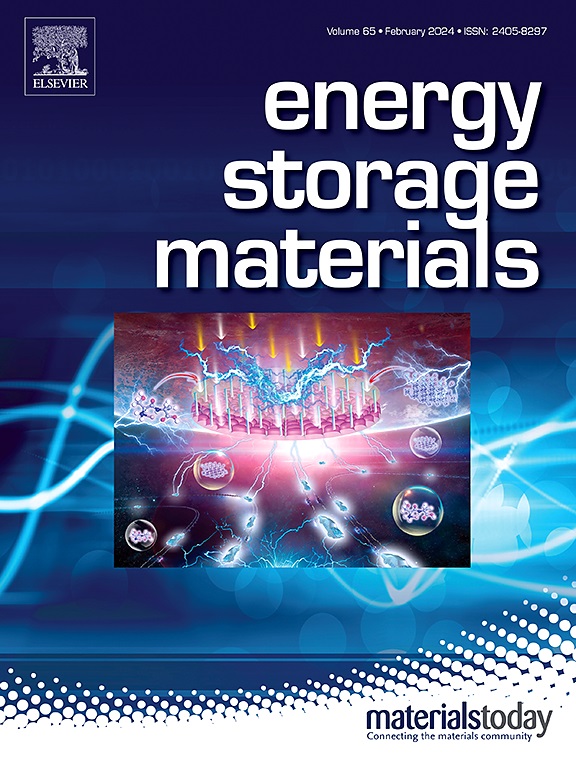Rational design of hard carbon anodes for sodium-ion batteries: Precursor engineering, structural modulation and industrial scalability
IF 20.2
1区 材料科学
Q1 CHEMISTRY, PHYSICAL
引用次数: 0
Abstract
Sodium-ion batteries (SIBs) have abundant resource, higher safety, and superior low-temperature performance, holding great potential for large-scale energy storage systems. Hard carbon (HC) with numerous sodium storage sites and high specific capacity is the mainstream anode materials for SIBs. The precursors of hard carbon are widely sourced, including biomass, synthetic polymers, coal and pitch. However, different molecular structure of precursors leads to uneven electrochemical performance of various HC. Pretreatment and post-treatment steps can effectively adjust structural parameters and surface state of hard carbon, influencing the performance of SIBs directly. This article summarizes different precursor sources, synthesis methods, structural parameters (morphology, defects, microcrystals, nanopores), and electrolyte interfaces to achieve better performance. Furthermore, Ah-level full batteries based on hard carbon anodes are also analyzed to provide new assistance for industrial production.
钠离子电池硬碳阳极的合理设计:前体工程、结构调制和工业可扩展性
钠离子电池具有资源丰富、安全性高、低温性能优越等优点,在大规模储能系统中具有很大的发展潜力。硬碳(HC)具有大量的钠存储位点和高比容量,是sib的主流阳极材料。硬碳的前体来源广泛,包括生物质、合成聚合物、煤和沥青。但由于前驱体分子结构的不同,导致各种HC的电化学性能参差不齐。预处理和后处理步骤可以有效地调整硬碳的结构参数和表面状态,直接影响sib的性能。本文综述了不同的前驱体来源、合成方法、结构参数(形貌、缺陷、微晶、纳米孔)和电解质界面以获得更好的性能。此外,还对基于硬碳阳极的ah级全电池进行了分析,为工业生产提供了新的辅助。
本文章由计算机程序翻译,如有差异,请以英文原文为准。
求助全文
约1分钟内获得全文
求助全文
来源期刊

Energy Storage Materials
Materials Science-General Materials Science
CiteScore
33.00
自引率
5.90%
发文量
652
审稿时长
27 days
期刊介绍:
Energy Storage Materials is a global interdisciplinary journal dedicated to sharing scientific and technological advancements in materials and devices for advanced energy storage and related energy conversion, such as in metal-O2 batteries. The journal features comprehensive research articles, including full papers and short communications, as well as authoritative feature articles and reviews by leading experts in the field.
Energy Storage Materials covers a wide range of topics, including the synthesis, fabrication, structure, properties, performance, and technological applications of energy storage materials. Additionally, the journal explores strategies, policies, and developments in the field of energy storage materials and devices for sustainable energy.
Published papers are selected based on their scientific and technological significance, their ability to provide valuable new knowledge, and their relevance to the international research community.
 求助内容:
求助内容: 应助结果提醒方式:
应助结果提醒方式:


